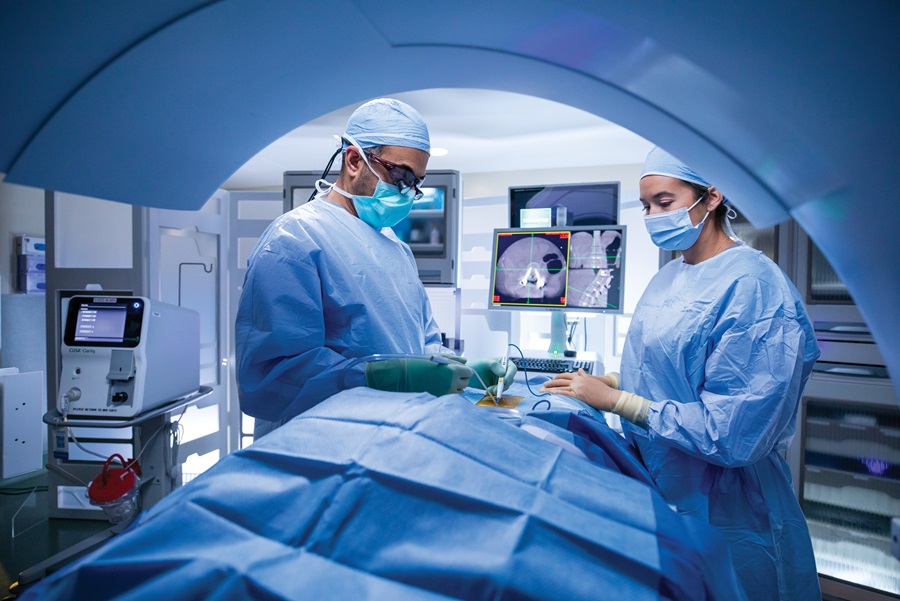How to Prepare for Visits to the Best Spine Surgeons in St Louis MO
How to Prepare for Visits to the Best Spine Surgeons in St Louis MO
Blog Article
A Review of Spine Problems That Commonly Cause Surgical Therapies
Spine conditions such as herniated discs, spine stenosis, and degenerative disc disease frequently require medical interventions when conventional therapies fail to minimize relentless symptoms. These conditions not only result in substantial pain yet can also badly impair everyday performance and overall quality of life. Understanding the nuances of each problem and the equivalent medical alternatives, such as discectomy or spine blend, is critical for effective management. As we discover these problems better, it ends up being noticeable that the decision-making procedure bordering medical therapy is complex and warrants cautious factor to consider.
Herniated Discs
Although many people with herniated discs may find relief via conservative treatments, surgical treatment becomes a required consideration when signs worsen or linger - best spine surgeons in st louis mo. A herniated disc occurs when the soft inner gel of a spinal disc extends via its external layer, potentially pressing nearby nerves and leading to pain, tingling, or weakness in the extremities
Traditional administration normally includes physical treatment, pain medicines, and corticosteroid injections, which intend to decrease inflammation and improve function. Nonetheless, in cases where these methods fail to minimize debilitating signs, surgical choices may be discovered.
One of the most usual operation for herniated discs is a discectomy, which entails the removal of the herniated part of the disc to ease pressure on the impacted nerve origin. In a lot more extreme situations, back blend might be necessary to stabilize the impacted vertebrae.
People are encouraged to discuss the prospective risks and benefits of surgery with their doctor to make an informed choice. Inevitably, the objective of any type of surgical intervention is to restore feature, reduce discomfort, and boost general lifestyle for people experiencing from herniated discs.
Back Constriction
Back stenosis takes place when the spaces within the spine slim, bring about raised pressure on the back cord and nerves. This problem can develop in numerous regions of the spinal column, including the lumbar and cervical locations, commonly due to age-related changes, such as degenerative disc condition, arthritis, or thickening of ligaments.
Clients with spinal constriction may offer with signs and symptoms that consist of pain, numbness, tingling, or weakness, mainly in the arms or legs. These signs can be aggravated by tasks that entail standing or walking, usually leading individuals to seek relief with conservative therapies like physical therapy, drugs, or epidural steroid injections.
Nonetheless, when these non-surgical treatments fall short to offer appropriate relief, medical alternatives may be thought about. Typical surgical treatments for back constriction include laminectomy, which involves the removal of component of the vertebra to alleviate stress, and spinal fusion, which stabilizes the affected area.
Spondylolisthesis
Spondylolisthesis happens when one vertebra slips onward over an additional, leading to imbalance of the spinal column. This problem can result from numerous elements, including congenital defects, injury, or degenerative changes in the back. It is most typically observed in the back region, especially at the L4-L5 and L5-S1 degrees.

Treatment options differ based on the extent of the slippage and the signs offered. Traditional procedures, including physical therapy, discomfort administration, and activity adjustment, are frequently the very first line of protection. Nonetheless, when non-surgical techniques fail to soothe signs and symptoms or when substantial nerve compression is present, medical treatment may be required. Surgical choices can consist of spinal combination or decompression treatments, focused on bring back placement and easing neurological signs. Early medical diagnosis and ideal management are critical for optimum outcomes in patients with spondylolisthesis.
Degenerative Disc Illness

The problem can be diagnosed through a mix of scientific evaluation, imaging studies, and patient background. When these techniques fail to provide adequate relief, surgical treatments might be taken into consideration.
Surgical options for DDD may include spinal fusion or man-made disc replacement, focused on supporting the impacted sector and alleviating pain (best spine surgeons in st louis mo). Inevitably, the option of treatment is individualized, taking right into account the intensity of the condition, person health and wellness, and way of living variables
Back Tumors

What factors contribute to the development of tumors within the spine, and exactly how do they show up in clients? Spinal lumps can occur from various aspects, consisting of genetic tendency, he said environmental influences, and pre-existing clinical conditions. They can be classified as primary growths, stemming in the back, or additional growths, which spread from various other regions of the body. Individuals might offer with an array of symptoms, consisting of local pain, neurological deficiencies, weakness, or adjustments in digestive tract and bladder function, depending upon the tumor's dimension and area.
Diagnosis normally involves imaging studies such as MRI or CT scans, which assist delineate the growth's features and influence on bordering structures. In analyzing treatment alternatives, the tumor's place, grade, and type are essential factors to consider. Surgical intervention may be warranted to relieve signs and symptoms, acquire a biopsy, or remove the growth completely. The goal of surgical procedure is often to unwind neural components and stabilize the back. Adjuvant treatments, consisting of radiation or radiation treatment, may also be required depending on the lump's nature. Early detection and treatment are vital for maximizing end results in clients with back tumors.
Verdict
In summary, spinal column problems such as herniated discs, spine constriction, spondylolisthesis, degenerative disc disease, and back tumors often require surgical intervention because of their possible to trigger considerable pain and practical disability. While conservative treatments might offer short-term alleviation, medical options come to be important when symptoms worsen or continue. Prompt diagnosis and treatment play a crucial role in recovering feature and boosting the lifestyle for affected individuals, emphasizing the importance of extensive spinal treatment.

Report this page